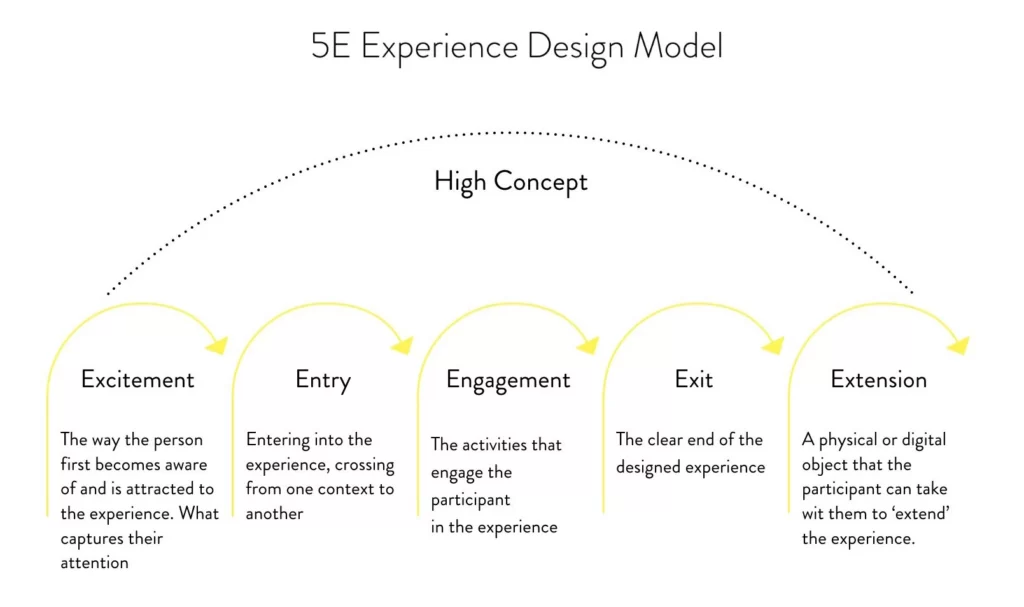5Es UX Design Model
There are several flavors of the 5EsDesign Model. Below are a few interpretations:
A: Entice -> Enter -> Engage -> Exit -> Extend
B. Excitement -> Entry -> Engagement -> Exit -> Extension
C. Engage -> Explore -> Explain -> Execute – Evaluate
See more below:
The 5E model is simply a framework for building holistic and meaningful experiences. It is useful to help you align a team, access collective creativity, and distribute leadership. The 5Es is an acronym and checklist to help evaluate and ideate different stages of the customer experience. The 5Es helps you build a customer journey map quickly and easily.
Here are the 5Es:
+ Entice. What event triggers a user to enter into the UX funnel?
+ Enter. What are the first few steps in the UX funnel?
+ Engage. What task(s) is the user trying to accomplish?
+ Exit. How does the user complete the task?
+ Extend. What follow-up actions occur after the user completes the task?
The 5Es UX Design Model is a framework used in the design process to create a user-centered experience that meets the needs and expectations of the user. The 5Es stand for:
- Engage: The first step is to engage the user by capturing their attention and sparking their interest in the product or service. This can be achieved through compelling visuals, clear messaging, and a user-friendly interface.
- Explore: The next step is to encourage the user to explore the product or service in more depth. This can be achieved by providing clear navigation, easy-to-use search functionality, and intuitive user flows.
- Explain: Once the user is engaged and exploring the product, it is important to provide clear explanations and guidance on how to use the product effectively. This can be achieved through clear and concise messaging, contextual help, and instructional videos or tutorials.
- Execute: The fourth step is to enable the user to execute the desired action or task. This can be achieved through intuitive forms, clear calls to action, and seamless integration with other tools or platforms.
- Evaluate: Finally, it is important to evaluate the user experience to ensure that it meets the needs and expectations of the user. This can be achieved through user feedback, usability testing, and data analysis.
The 5Es UX Design Model provides a framework for creating a user-centered experience that is engaging, intuitive, and effective. By following these steps, designers can create products and services that meet the needs and expectations of the user and ultimately drive business success.
RESOURCES:
The 5E Experience Design Model
The 5E Experience Design Model LaptrinhX

Source: https://www.kaospilot.dk/5e-model/
« Back to Glossary Index